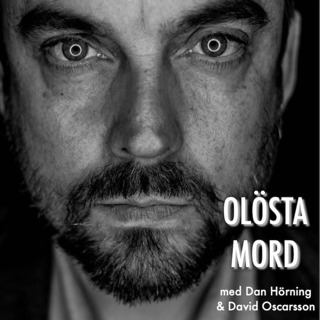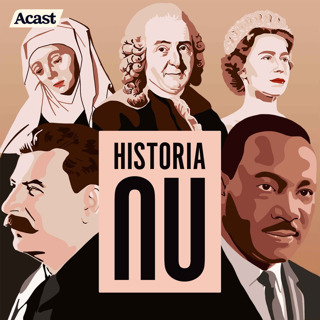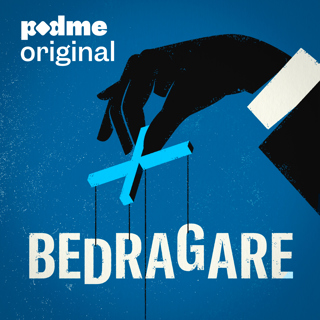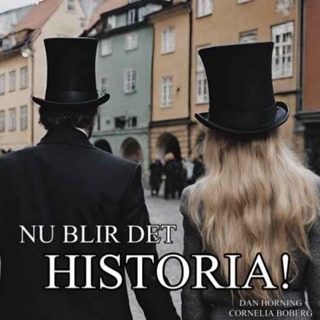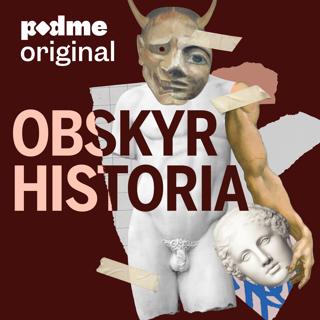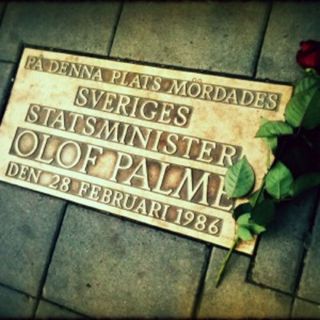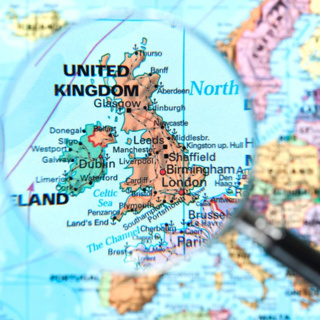
115. Who? Who? and a Great Show
It was time for Disraeli to break through. Not yet to the top job: that, as Melbourne had predicted years before, would go to Stanley, now known as Derby. But Disraeli would land a big job in government, that of Chancellor of the Exchequer. Not an easy job for a man who was no financial expert. His major challenge was that he represented a political group opposed to the Repeal of the Corn Laws, just when Britain was at the top of its world leadership in economics, to which that repeal had contributed: the British had created a business environment that could benefit fully from free trade internationally (at least where it suited them). British success would be celebrated in a colossal show, the Great Exhibition, to be attended by millions, many of them taking advantage of the new mobility provided by the railway age. Meanwhile, Disraeli would be set the task of coming up with a budget in keeping with the times, but which would secure the support of people focused on the interests of the one group that had suffered most from the loss of tariff protection, the gentlemen farmers, with good landholdings though not as massive as those of the great noble families. Keeping them loyal mattered, since Derby and Disraeli's wing of the Conservatives was short of support (and of talent) after the business interests had deserted them to go with Peel. Illustration: The British contribution to the Great Exhibition, from Dickinson's Comprehensive Pictures of the Great Exhibition of 1851 (public domain) Music: Bach Partita #2c by J Bu licensed under an Attribution-NonCommercial-No Derivatives (aka Music Sharing) 3.0 International License.
6 Nov 202214min

114. A revolution that didn't happen and a breakthrough that did
We’re back in 1848, with the Year of Revolutions, a few of which succeeded, most of which were put down – not least in Northern Italy, where Joseph Radetzky, celebrated in a cheerful Strauss tune, proved far less cheerful in his treatment of opponents to Austrian rule. Britain, on the other hand, saw no revolution, though many feared one from the Chartists. In the event, the last shout of Chartism turned out to be little more than a whimper, disarmed by improved economic conditions and channels to funnel protest into less harmful directions. !848 also saw the moment when the majority wing of the split Conservative Party, the Protectionists, opposed to Repeal of the Corn Laws, could have found a new leader in Benjamin Disraeli. But he was just too eccentric, perhaps too Jewish, somehow too foreign, and he was passed over. The first of several occasions when he was denied, until late 1851. Then he at last secured the position of Leader of the Party in the Commons (under the overall leader, Stanley). At least that meant that he was in a leading position just as his party formed a government again. So he was poised to enter government for the first time, and in a senior position too. Illustration: On the barricades on the Rue Soufflot, Paris, 25 June 1848 by Horace Vernet Music: Bach Partita #2c by J Bu licensed under an Attribution-NonCommercial-No Derivatives (aka Music Sharing) 3.0 International License.
30 Okt 202214min

113. Russell, Palmerston and tit-for-tat politics
We saw last week that the Russell government stood back from the Great Irish Famine to the point of practically criminal negligence. But what was it doing in the meantime? Well, it turns out that it wasn’t achieving much. It was a minority government, only able to hang on to office because of the divisions in the Conservative Party. Indeed, the most dramatic events mostly surrounded the figure of the Foreign Secretary, Lord Palmerston. His most remarkable action as his behaviour over the Don Pacifico affair, a striking example of the use of gunboat diplomacy. It was also another instance of the maverick behaviour which ultimately led to his fall. And, thanks to his tit-for-tat with John Russell, that was quickly followed by the fall of the whole government. It had stayed in office thanks to the divisions in the main Opposition party, and it was brought down by the divisions in its own. Illustration: Pen and ink portrait of Lord Palmerston, by Harry Furniss National Portrait Gallery 6251(46) Music: Bach Partita #2c by J Bu licensed under an Attribution-NonCommercial-No Derivatives (aka Music Sharing) 3.0 International License
23 Okt 202214min

112. Irish hunger
A million dead. Over a million emigrants. A population that has never recovered to its level before the disaster. The Irish starved while the British government stood back and decided to let the market solve the problem for it. Or even to allow what it saw as God’s will to work itself out. The legacy is a deep well of bitterness against Britain. With the descendants of the emigrants in the United States outnumbering the Irish population by nearly six times, it’s not surprising that the bitterness is particularly strong there. Which, while it doesn’t make my experience of living through a terrorist campaign any pleasanter, does perhaps at least explain why it was funded from across the Atlantic. Illustration: The Irish Famine: scene at the gate of the work-house. Public Domain Music: Bach Partita #2c by J Bu licensed under an Attribution-NonCommercial-No Derivatives (aka Music Sharing) 3.0 International License
16 Okt 202214min

111. Peel, the Corn Laws and Ireland
Peel’s name is tightly bound up with the issue of Corn Law Repeal, the striking achievement of his only full period in office (the hundred days he had before didn't really count). The repeal was, however, double-edged: a major success but also a (politically) fatal self-inflicted wound, obtained only at the price of splitting his own party and having to accept support from the Whigs, or Liberals as they were increasingly known. Although it was the Corn Laws that left him vulnerable to being brought down, the final blow came from another quarter, that other cauldron of suffering, and of trouble for British governments at the time, Ireland. When the Liberals withdrew their support over a new Irish Coercion Bill, Peel realised he'd reached the end of the road and resigned. Although they were in Opposition, the Liberals had become the masters of the government's destiny. It was time for another major realignment in British politics. Illustration: A meeting of the Anti-Corn Law League in Exeter Hall, London. Unknown author. Public Domain. Music: Bach Partita #2c by J Bu licensed under an Attribution-NonCommercial-No Derivatives (aka Music Sharing) 3.0 International License
9 Okt 202214min

110. The choice: wielding a big stick or speaking softly
As Melbourne left the scene, so men like John Russell could step into his place. Russell had indeed been adding to his reputation as a liberal, just as his Whig Party was increasingly being transformed into the Liberal Party. A fellow liberal, but increasingly a rival, was Lord Palmerston. He was highly critical of his successor as Foreign Secretary, Lord Aberdeen, but the behaviour Palmerston denounced as weak seems more a case of using soft speech, rather than simply wielding a big stick. How he handled tensions with America rather supports that viewpoint. By way of contrast, Aberdeen did sometimes resort to the stick, in particular in two conflicts that Palmerston had got going, in China and in Afghanistan, and in the first it was ugly, while in the second it was disastrous. Illustration: Elizabeth Butler Remnants of an army, showing William Brydon reaching the British fort at Jalalabad, after the retreat from Kabul. Music: Bach Partita #2c by J Bu licensed under an Attribution-NonCommercial-No Derivatives (aka Music Sharing) 3.0 International License
2 Okt 202214min

109. Curious Triangle: Melbourne, Victoria and Peel
The curious relationship continues between Queen Victoria and her first Prime Minister, Viscount Melbourne. It is, however, perhaps less easy than in the past, as the young queen becomes more wilful, more determined on getting her way. One of the things the queen’s particularly determined about is not having that “cold unfeeling disagreeable man” Peel as Prime Minister. However, when Melbourne decides it’s time to resign, the first choice to replace him, the Duke of Wellington, says it has to be Peel. She brings herself to see the man she dislikes so much, and manages, on this occasion, to put him off. So she forces her favourite, Melbourne, ageing and increasingly unwell, back into office. She can’t pull it off a second time, though. On the back of a good election win, Peel finally forms a government with a solid majority behind him. He brings into office many of the old crowd – Aberdeen, Stanley, the dynamic and thrusting Gladstone. But one man he leaves out: the new young MP for Maidstone, Benjamin Disraeli. That may turn out not to have been his wisest decision. Illustration: A dramatic encounter between the Duke of Wellington, dressed in armour bearing a large sword, and Queen Victoria with Lord Melbourne kneeling in supplication and two ladies in waiting. Coloured lithograph by H.B. (John Doyle), 1840. Music: Bach Partita #2c by J Bu licensed under an Attribution-NonCommercial-No Derivatives (aka Music Sharing) 3.0 International License
25 Sep 202214min

108. Palmerston, sometimes a liberal, always an activist
After the last few episodes and their focus on domestic issues, you could be forgiven for thinking that the Grey and Melbourne governments had practically no foreign policy. Nothing could be further from the truth. As a global power with a huge empire, Britain was actively pursuing foreign policy objectives. And in Lord Palmerston, it had a foreign minister far more activist than, Melbourne, to guide it. In some instances that went well. But, as today, Afghanistan would prove a problem. Then when Britain used military force against China to maintain its right to push narcotics into that sad and declining empire, you might even find that it had behaved shamefully. Illustration: Henry John Temple, 3rd Viscount Palmerston in 1844-45, by John Partridge National Portrait Gallery 1025 Music: Bach Partita #2c by J Bu licensed under an Attribution-NonCommercial-No Derivatives (aka Music Sharing) 3.0 International License
18 Sep 202214min









